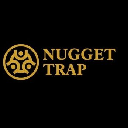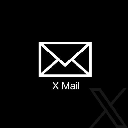-
 bitcoin
bitcoin $114684.631706 USD
-0.87% -
 ethereum
ethereum $4228.677447 USD
1.58% -
 bnb
bnb $1294.880693 USD
-1.16% -
 tether
tether $1.000819 USD
-0.02% -
 xrp
xrp $2.605138 USD
2.79% -
 solana
solana $209.908690 USD
5.89% -
 usd-coin
usd-coin $0.999903 USD
-0.03% -
 dogecoin
dogecoin $0.213423 USD
2.93% -
 tron
tron $0.322721 USD
-0.10% -
 cardano
cardano $0.727247 USD
3.66% -
 hyperliquid
hyperliquid $42.339456 USD
6.05% -
 chainlink
chainlink $19.910811 USD
5.16% -
 ethena-usde
ethena-usde $1.000557 USD
0.00% -
 stellar
stellar $0.349734 USD
2.69% -
 bitcoin-cash
bitcoin-cash $543.848687 USD
-0.21%
Is the Bollinger Band strategy of Quant(QNT) effective? What do the narrowing and opening represent?
Bollinger Bands help traders assess Quant (QNT) volatility; narrowing bands signal potential breakouts, while widening bands indicate increased volatility and trend confirmation.
May 01, 2025 at 09:42 pm

The Bollinger Band strategy is a popular technical analysis tool used by traders to assess the volatility and potential price movements of various assets, including cryptocurrencies like Quant (QNT). When applied to Quant (QNT), the effectiveness of this strategy can vary based on market conditions, trading strategies, and individual risk tolerance. In this article, we will explore the Bollinger Band strategy in detail, focusing on its application to Quant (QNT), and discuss what the narrowing and opening of the bands represent.
Understanding Bollinger Bands
Bollinger Bands are a type of statistical chart characterizing the prices and volatility over time of a financial instrument or commodity, using a moving average with two standard deviation lines plotted above and below it. The bands are typically composed of:
- Middle Band: A simple moving average (SMA) that represents the intermediate-term trend.
- Upper Band: The SMA plus two standard deviations.
- Lower Band: The SMA minus two standard deviations.
The width of the bands adjusts dynamically based on the volatility of the asset. When the price of Quant (QNT) moves closer to the upper band, it might indicate that the asset is overbought, and when it approaches the lower band, it might suggest that the asset is oversold.
Applying Bollinger Bands to Quant (QNT)
To apply Bollinger Bands to Quant (QNT), traders typically follow these steps:
- Select a Time Frame: Choose a time frame that aligns with your trading strategy, such as daily, hourly, or 15-minute charts.
- Calculate the SMA: Use a 20-period SMA for the middle band.
- Calculate the Standard Deviation: Calculate the standard deviation of the price over the same period.
- Plot the Bands: Plot the upper band as SMA + 2 standard deviations and the lower band as SMA - 2 standard deviations.
Once the Bollinger Bands are plotted on the Quant (QNT) chart, traders can begin to analyze the price action within the context of these bands.
Interpreting Narrowing Bollinger Bands
Narrowing Bollinger Bands, also known as a Bollinger Band squeeze, occurs when the bands come closer together, indicating a period of low volatility. This phenomenon can signal that a significant price movement may be imminent. For Quant (QNT), a narrowing of the bands could mean:
- Reduced Volatility: The price of Quant (QNT) is moving within a tighter range, suggesting a consolidation period.
- Potential Breakout: A narrowing of the bands often precedes a breakout, where the price of Quant (QNT) could move sharply in either direction.
Traders might use this information to prepare for potential trading opportunities, such as setting up entry and exit points based on the expected breakout direction.
Interpreting Opening Bollinger Bands
Opening Bollinger Bands refer to the bands widening, which indicates an increase in volatility. For Quant (QNT), this could mean:
- Increased Volatility: The price of Quant (QNT) is experiencing larger swings, which could be due to significant market events or news.
- Trend Confirmation: An opening of the bands can confirm the start of a new trend, whether bullish or bearish, depending on the direction of the price movement relative to the middle band.
Traders might interpret an opening of the bands as a signal to adjust their positions, potentially increasing their exposure if they believe the trend will continue or taking profits if they think the volatility might lead to a reversal.
Effectiveness of Bollinger Band Strategy for Quant (QNT)
The effectiveness of the Bollinger Band strategy for Quant (QNT) depends on several factors:
- Market Conditions: The strategy may be more effective in trending markets than in ranging markets.
- Trading Style: Short-term traders might find Bollinger Bands useful for identifying quick entry and exit points, while long-term investors might use them to confirm broader trends.
- Risk Management: Proper risk management is crucial, as false signals can occur, leading to potential losses.
Traders who successfully integrate Bollinger Bands into their analysis of Quant (QNT) often combine them with other indicators, such as the Relative Strength Index (RSI) or Moving Average Convergence Divergence (MACD), to increase the accuracy of their predictions.
Practical Example of Using Bollinger Bands on Quant (QNT)
To illustrate how to use Bollinger Bands on Quant (QNT), let's consider a hypothetical scenario:
- Scenario: The Bollinger Bands on the daily chart of Quant (QNT) have been narrowing for the past week, and the price is currently trading near the middle band.
- Analysis: This narrowing suggests that a breakout might be imminent. Traders might prepare for a potential move in either direction.
- Action: If the price breaks above the upper band, traders might enter a long position, expecting further upward movement. Conversely, if the price breaks below the lower band, traders might enter a short position, anticipating a downward trend.
To execute this strategy, traders would follow these steps:
- Monitor the Bands: Keep an eye on the Bollinger Bands to identify when a squeeze occurs.
- Set Alerts: Use trading platforms to set price alerts near the upper and lower bands to be notified of potential breakouts.
- Enter the Trade: Once a breakout occurs, enter the trade in the direction of the breakout, setting appropriate stop-loss and take-profit levels.
- Manage the Trade: Continuously monitor the trade, adjusting stop-loss levels as the price moves in your favor to lock in profits.
FAQs
Q: Can Bollinger Bands be used in combination with other indicators for Quant (QNT)?A: Yes, Bollinger Bands can be effectively combined with other technical indicators like the RSI or MACD to enhance trading signals for Quant (QNT). This combination can help confirm trends and reduce the likelihood of false signals.
Q: How do I adjust the settings of Bollinger Bands for Quant (QNT)?A: The standard settings for Bollinger Bands are a 20-period SMA with two standard deviations. However, traders might adjust these settings based on their trading style and the specific characteristics of Quant (QNT). For example, using a shorter period SMA might be more suitable for short-term trading.
Q: What are the potential risks of using Bollinger Bands for Quant (QNT)?A: One of the main risks is false signals, where the price might break out of the bands but then quickly reverse. Traders should use proper risk management techniques, such as setting stop-loss orders, to mitigate these risks when trading Quant (QNT).
Q: How can I backtest the Bollinger Band strategy for Quant (QNT)?A: To backtest the Bollinger Band strategy for Quant (QNT), traders can use historical price data to simulate trades based on the strategy's rules. Many trading platforms and software offer backtesting tools where you can input your strategy parameters and analyze its performance over past periods.
Disclaimer:info@kdj.com
The information provided is not trading advice. kdj.com does not assume any responsibility for any investments made based on the information provided in this article. Cryptocurrencies are highly volatile and it is highly recommended that you invest with caution after thorough research!
If you believe that the content used on this website infringes your copyright, please contact us immediately (info@kdj.com) and we will delete it promptly.
- XRP Price Prediction: Weekend Rollercoaster or Rally?
- 2025-10-12 08:45:16
- Bittensor (TAO): Super Bullish Signals Point to Potential 2x Rally
- 2025-10-11 10:25:12
- Silver Price Correction: Navigating the Dip & Identifying Key SEO Keywords
- 2025-10-11 10:25:12
- Decoding Crypto Trends: Bittensor's Bull Run, Cardano's Dip, and LivLive's Presale Buzz in 'Uptober 2025'
- 2025-10-12 08:45:16
- MoonBull: The Crypto Meme Coin Promising 1000x Gains?
- 2025-10-11 10:30:01
- Crypto Payroll Revolution: Stablecoins, Altcoins, and the Future of Salary Payments
- 2025-10-11 10:30:01
Related knowledge

Practical parameter settings for a Bitcoin multi-timeframe moving average system
Sep 18,2025 at 10:54pm
Optimizing Timeframe Combinations for Bitcoin Trading1. Selecting appropriate timeframes is crucial when building a multi-timeframe moving average sys...

How can I filter out false breakouts in Dogecoin high-frequency trading?
Sep 22,2025 at 01:00am
Understanding False Breakouts in Dogecoin Trading1. A false breakout occurs when Dogecoin's price appears to move beyond a defined support or resistan...

Techniques for identifying tops and bottoms in the Bitcoin on-chain NVT model
Sep 20,2025 at 07:54pm
Understanding the NVT Model in Bitcoin Analysis1. The Network Value to Transactions (NVT) ratio is often described as the 'P/E ratio' of the cryptocur...

What does the surge in open interest in Bitcoincoin futures mean?
Sep 20,2025 at 11:18pm
Understanding the Surge in Dogecoin Futures Open Interest1. A surge in open interest within Dogecoin futures indicates a growing number of active cont...

How can I use the Ethereum USDT premium to gauge market sentiment?
Sep 18,2025 at 11:55pm
Understanding the Ethereum USDT Premium1. The Ethereum USDT premium refers to the price difference between USDT (Tether) traded on Ethereum-based plat...

What should I do if Ethereum staking yields decline?
Sep 20,2025 at 06:18am
Understanding the Causes Behind Declining Ethereum Staking Yields1. The Ethereum network transitioned to a proof-of-stake consensus mechanism with the...

Practical parameter settings for a Bitcoin multi-timeframe moving average system
Sep 18,2025 at 10:54pm
Optimizing Timeframe Combinations for Bitcoin Trading1. Selecting appropriate timeframes is crucial when building a multi-timeframe moving average sys...

How can I filter out false breakouts in Dogecoin high-frequency trading?
Sep 22,2025 at 01:00am
Understanding False Breakouts in Dogecoin Trading1. A false breakout occurs when Dogecoin's price appears to move beyond a defined support or resistan...

Techniques for identifying tops and bottoms in the Bitcoin on-chain NVT model
Sep 20,2025 at 07:54pm
Understanding the NVT Model in Bitcoin Analysis1. The Network Value to Transactions (NVT) ratio is often described as the 'P/E ratio' of the cryptocur...

What does the surge in open interest in Bitcoincoin futures mean?
Sep 20,2025 at 11:18pm
Understanding the Surge in Dogecoin Futures Open Interest1. A surge in open interest within Dogecoin futures indicates a growing number of active cont...

How can I use the Ethereum USDT premium to gauge market sentiment?
Sep 18,2025 at 11:55pm
Understanding the Ethereum USDT Premium1. The Ethereum USDT premium refers to the price difference between USDT (Tether) traded on Ethereum-based plat...

What should I do if Ethereum staking yields decline?
Sep 20,2025 at 06:18am
Understanding the Causes Behind Declining Ethereum Staking Yields1. The Ethereum network transitioned to a proof-of-stake consensus mechanism with the...
See all articles










































































